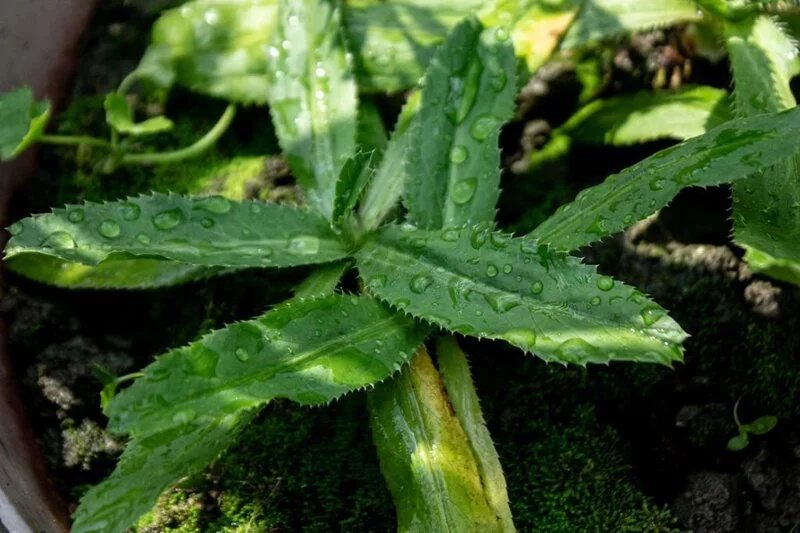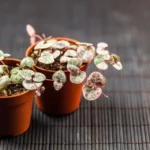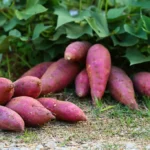Culantro! You’ve probably heard the name and thought it was a typo for cilantro. But no, it’s not a spelling mistake. Culantro is a unique herb with its own character and flavor. Whether you’re an experienced gardener or a novice looking to expand your green thumb, learning to grow this plant can be a fun journey.
- Appearance: Culantro (Eryngium foetidum), also known as sawtooth coriander or long coriander, features long, narrow, lance-shaped leaves with serrated edges, resembling a larger version of cilantro but with a different growth pattern.
- Aroma and Flavor: It has a strong, pungent aroma and flavor similar to cilantro but more robust and lingering, often described as a blend between cilantro and parsley, with hints of citrus.
- Culinary Uses: Culantro is widely used in Caribbean, Latin American, and Southeast Asian cuisines for flavoring soups, stews, salsas, and curries. It’s particularly valued in dishes where a strong cilantro flavor is desired but regular cilantro might wilt.
- Growing Habits: This herb is a perennial in tropical climates but often grown as an annual in temperate regions. It prefers partial shade to full sun and well-drained soil, and it’s less susceptible to bolting than cilantro, providing a longer harvest period.
- Quality: All Culantro seeds packaged by Seed Needs are intended for the current and the following growing seasons. All seeds are stored in a temperature controlled facility that is free of significant amounts of moisture.
What is Culantro?
In the simplest terms, culantro is an aromatic herb used in Caribbean, Latin American, and Asian cuisines. It’s known for its strong, robust flavor that’s somewhat similar to cilantro, but has a more profound kick. It has long, serrated leaves, and unlike its cousin cilantro, it loves the heat and can grow all summer without bolting.
- For more nutritious and tasty vegetables
- Optimum levels of primary plant nutrients
- Contains no GMOs, chicken manure or sewage sludge
- Feeds for several months
- Made with 100% organic and natural ingredients
Choosing the Right Environment for Culantro
Culantro is a tropical plant, which means it thrives in warm, humid conditions. It prefers full to partial shade and doesn’t like extremely hot weather or frost. If you live in a cooler climate, don’t fret! You can still grow culantro indoors or in a greenhouse. Remember, this plant is all about comfort, so choose a spot where it feels cozy and protected from the elements.
- NATURAL AND ORGANIC NUTRIENT RICH FERTILIZER: We’re on a mission to get America growing again and it all starts with what’s right beneath us — your soil; Grow a bountiful garden in your home with the Back to the Roots All-Purpose Peat-Free Potting Mix, packed with the nutrients needed for your succulents, plants, flowers, and vegetables to thrive
- ROOT BOOSTING AND MOISTURE RETAINING MYCORRHIZAE, YUCCA EXTRACT, AND COCONUT COIR: This organic potting soil has mycorrhizae, coconut coir, and yucca extract which enhances the plant’s and root’s uptake of water and nutrients required for growth; You’re bound to have a thriving indoor and outdoor garden in no time
- INCLUDES pH BALANCING DOLOMITIC LIMESTONE: The dolomitic limestone of this all-purpose potting soil has a combination of calcium carbonate and magnesium carbonate which effectively neutralizes acidity and prevent nutrient deficiency
- GREAT FOR YOUR PLANTS AND THE PLANET: The Back to the Roots All-Purpose Potting Mix is the 1st premium, 100% peat-free soil in the market; Mined peatlands contribute yearly CO2 emissions equivalent to what cars all over the world are releasing — that’s why we think it’s so important to leave peat alone
- ZERO-RISK GARDENING: Made in the USA and 100% Guaranteed to grow; All of our soils come with 100% satisfaction guarantee – if you have any problems, we will send you a new bag to get you growing
Preparing the Soil for Culantro Planting
Think of your culantro as a guest coming for a stay. You want to make their visit as comfy as possible, right? Well, the first step is setting up a nice, cozy bed — in this case, the soil. Culantro likes rich, well-draining soil. Add organic compost or manure to enrich your soil, making it a fertile home for your plant.
Planting Culantro: Step-by-Step Guide
- Begin by soaking your culantro seeds in warm water for a day to help speed up germination.
- Once your soil is ready, sow the seeds about a quarter-inch deep and cover them lightly with soil. Keep them spaced apart — about 4 to 5 inches should do the trick.
- Water the soil lightly. Remember, culantro likes it humid, but overwatering can lead to root rot. Think moist, not waterlogged!
Caring for Your Culantro Plant
- Keep the soil consistently moist. Culantro likes to sip its water regularly, not gulp it down all at once.
- It’s not a fussy feeder, but feeding it with a balanced, water-soluble fertilizer every couple of weeks can keep it happy.
- Watch out for pests. Aphids and slugs might invite themselves over. A good natural insecticide or some friendly garden predators can take care of them.
- Finally, patience! Culantro might take a little while to get growing, but once it does, you’ll have a fresh supply of this flavorful herb.
Remember, every plant is a living thing. It might need a little trial and error before you find exactly what works best. But once you do, you’ll have the satisfaction of growing your own culantro.
Harvesting Culantro
Harvesting culantro is like giving your plant a haircut. Once the plant is about 4 to 6 inches tall, you can start snipping off the leaves. Just make sure you leave some leaves on the plant so it can keep growing. Harvesting in the early morning is best – that’s when the leaves are full of fresh flavor.
Common Pests and Diseases
Every plant has its own set of troubles, and culantro is no different. Watch out for pests like aphids, slugs, and snails. They’re the uninvited guests at the garden party. Diseases such as leaf spot and root rot can also cause problems. The key is to catch these issues early. Keep an eye on your plant, and it’ll tell you when something’s wrong.
Culinary Uses of Culantro
Now, for the fun part – using your home-grown culantro! This herb is a superstar in the kitchen. It adds a burst of flavor to soups, stews, salads, and marinades. It’s used in many Latin American and Asian dishes. Plus, it’s packed with vitamins and minerals, so it’s good for you too.
Conclusion
Growing culantro might seem a bit challenging at first, but it’s worth the effort. This flavorful, nutritious herb is a great addition to your garden and your kitchen. So get your hands dirty, have patience, and before you know it, you’ll be a culantro-growing expert!






